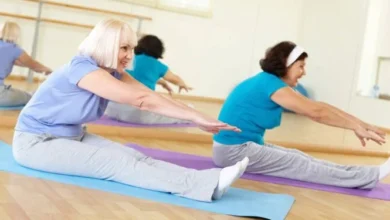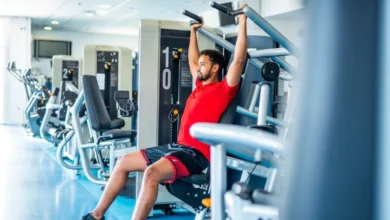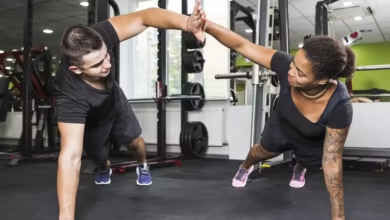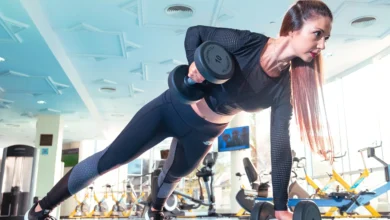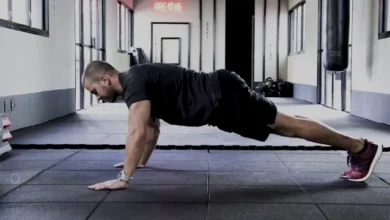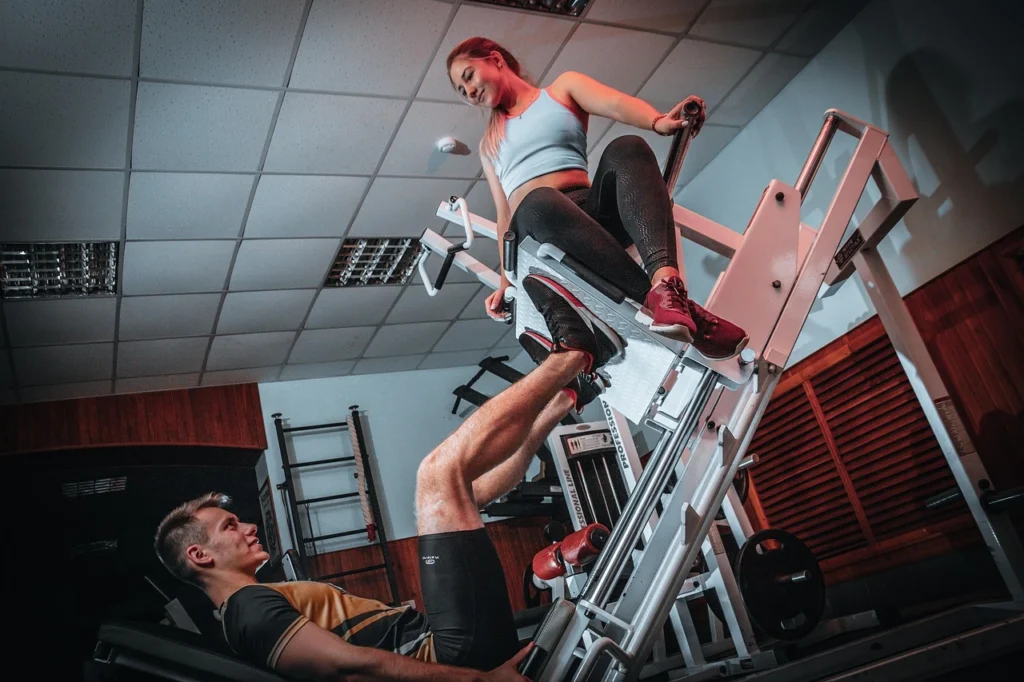
The Leg Press is, without a doubt, one of the most popular and effective machines in gyms, serving as a fundamental exercise for anyone looking to tone their legs, develop their glutes, and gain lower body strength. As a multi-joint exercise (involving hips, knees, and ankles), it allows for the use of heavier loads with greater safety and stability, intensely working most of the leg musculature.
If your goal is hypertrophy, strength gain, or improved performance in other sports (like running or cycling), incorporating Leg Press Exercises into your training routine is essential. However, its versatility demands knowledge: how you position your feet and choose the type of machine can completely change the focus of your workout.
READ ALSO:
- Quick Exercise for Lower Back Pain Relief: Simple Moves That Work
- Does Running Help You Lose Weight? How to Start and Progress Without Losing Your Breath
Follow our PAGE
Leg Press: What It Is and What It’s For
The Leg Press is a strength training machine where the practitioner pushes a platform with their feet, using leg strength against a load (weight plates). It is often compared to the free squat, as both work the same main muscle groups (quadriceps, glutes, and hamstrings), but the Leg Press offers the benefit of greater back support, reducing stress on the spine and allowing the focus to be directed almost exclusively to the lower limbs.
Main Muscles Worked
Leg Press Exercises are extremely comprehensive for the lower body. The main muscles involved are:
- Quadriceps Femoris: The primary engine of the movement. Responsible for knee extension and hypertrophy of the anterior thigh.
- Glutes (Maximus, Medius, and Minimus): Worked intensely, especially when the platform is pushed with greater range of motion or with a higher foot position.
- Hamstrings (Posterior Thigh): Assist in knee flexion and are activated during the eccentric (lowering) phase of the weight.
- Triceps Surae (Calves): Activated as a stabilizer and can be worked in isolation on the machine (Calf Raises on the Leg Press).
The Most Common Types of Leg Press Exercises
The term “Leg Press” encompasses different machines, each with a specific angle and muscle focus. Understanding the differences is crucial for optimizing your workout.
The 45-Degree Leg Press: The Hypertrophy Classic
The most common model in gyms. In this machine, the practitioner is seated at an incline, and the platform is pushed at a 45-degree angle. This type generally allows for the use of the highest load, making it ideal for those seeking maximum strength and overall hypertrophy.
- Main Focus: Quadriceps and Glutes.
- Advantage: Allows varying foot position to isolate different regions and offers high safety, with easy-to-engage locks.
The Horizontal (or Seated) Leg Press
In this model, the practitioner is seated upright, and the platform is pushed horizontally, level with the torso. It is often considered the most “beginner-friendly.”
- Main Focus: Quadriceps. Tends to focus less on the glutes.
- Advantage: Offers excellent back support, making it the best option for people with back pain or those who cannot handle vertical load on the spine.
The 90-Degree (Vertical) Leg Press: The Most Challenging
The rarest and most demanding version. The practitioner lies horizontally and pushes the weight directly upwards (90 degrees).
- Main Focus: Strongly emphasizes the Quadriceps and the upper thigh.
- Disadvantage: Not recommended for beginners, and the position can be uncomfortable for some people’s backs. Requires greater control of the load, even with lighter weights.
The Importance of Correct Execution: 4 Essential Tips
Despite its safety features, the Leg Press requires attention to prevent injuries and ensure maximum muscle activation. The TotalPass Blog highlights crucial points to avoid:
1. Avoid lifting your hips off the bench
This is the most serious mistake. Allowing the hips to lift and the lower back to round (known as “lumbar flexion”) during the descent of the weight places excessive and dangerous pressure on the spine. Keep your back firmly pressed against the pad, ensuring the movement is performed only at the hip and knee joints.
2. Do not fully straighten the leg (locking the knee)
When pushing the platform, avoid full extension and “locking” the knees. This shifts the tension from the muscle to the joint, increasing the risk of injury. Stop the movement just before full extension and maintain muscle tension.
3. Never let your knees collapse inward during the execution
The knee must follow the same line as the feet, meaning slightly pointed outwards. Letting the knees touch or collapse inward (dynamic valgus) overloads the joint and can cause ligament injuries.
4. Do not push with the balls of your feet
The force to push the platform must come primarily from the heels and the center of the foot, not the toes. Focusing on the heels ensures correct activation of the glutes and hamstrings, in addition to protecting the knees.
Conclusion
The Leg Press is a powerful tool for developing the lower body, offering an unparalleled combination of safety, high load, and versatility. Whether in the 45-degree version for maximum hypertrophy, the horizontal for greater lumbar comfort, or the vertical for deeper quadriceps isolation, Leg Press Exercises are indispensable for a complete leg workout. Mastering the correct technique—avoiding knee locking and ensuring full hip support—is the key to turning this machine into one of your greatest allies in the pursuit of strength and muscle definition. Always remember to consult your fitness professional to adjust the load, sets, and exercise variation to your individual goals and fitness level.

Hello! My name is Alan Teixeira and I am passionate about helping people live healthier, more balanced lives. From mindful eating to daily habits that promote physical and mental well-being, I believe that small, consistent changes can lead to powerful transformations.
I created this blog to share practical tips, reliable information, and thoughtful insights that can inspire you to take better care of yourself—with balance, mindfulness, and positivity.
If you are looking to improve your health, nourish your body, and build a lighter, more fulfilling routine, you are in the right place. Welcome!

